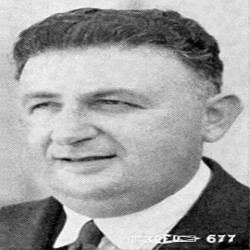
Karl Freund
American cinematographer and film director
| Date of Birth | : | 16 January, 1890 |
| Date of Death | : | 03 May, 1969 (Aged 79) |
| Place of Birth | : | Dvůr Králové nad Labem, Czechia |
| Profession | : | Cinematographer, Film Director |
| Nationality | : | American |
Karl Freund (কার্ল ফ্রুন্ড) A.S.C. was a German Bohemian and American cinematographer and film director. He is best known for photographing Metropolis, Dracula, and television's I Love Lucy. Freund was an innovator in the field of cinematography, often noted for pioneering the unchained camera technique.
Early life
Karl Freund was born in Dvůr Králové, Bohemia. When he was 11 his family moved to Berlin. His career began in 1905 when, at age 15, he was hired as an apprentice projectionist for Alfred Duskes films. In 1907, he began work at the International Cinematograph and Light Effect Society. Freund was drafted by the Imperial Army to fight in World War I but was released from duty after only three months.Early film career
Freund began his film career in 1905. He was a newsreel cameraman in 1907 and a year later was working for Sascha-Film in Vienna. In 1911, Freund moved to Belgrade to create a film laboratory for the Brothers Savic. Freund worked as a cinematographer on over 100 films, including the German Expressionist films The Golem (1920) and The Last Laugh (1924). Freund worked with director Fritz Lang on a multiple projects, of which Metropolis (1927) is the best known. Freund co-wrote, and was cinematographer on, Berlin: Symphony of a Metropolis (1927), directed by Walter Ruttmann. Between 1926 and 1929, Freund was the production head at Fox Europa Film. Freund's only known film as an actor is Carl Theodor Dreyer's Michael (1924) in which he appears as a sycophantic art dealer who saves the tobacco ashes dropped by a famous painter.American film and television career
Freund immigrated to the United States in 1929, where he continued to shoot well-remembered films such as Dracula (1931) and Key Largo (1948). His work on Dracula came under a mostly disorganized shoot, with the usually meticulous director Tod Browning leaving cinematographer Freund to take over during much of filming, making Freund something of an uncredited director on the film. He won an Academy Award for Best Cinematography for The Good Earth (1937). Freund directing Boris Karloff in The Mummy (1932) Between 1921 and 1935, Freund directed 10 films, of which the best known are probably his two credited horror films, The Mummy (1932) starring Boris Karloff, and his last film as director, Mad Love (1935) starring Peter Lorre. Freund worked under contract for MGM and Warner Bros. In 1944 he founded the Photo Research Corporation of Burbank to manufacture TV cameras and exposure meters. In an interview Richard Brooks tells a story of his interactions with Freund when they worked on the film Key Largo together. Brooks also recounted useful advice he received from Freund two years later, just before Brooks' directorial debut. Freund gave Brooks reels of 16mm film, calling them "Lesson Number One." When Brooks watched the reels at home, he saw that they were pornography. The next day, Freund explained "I produced them. My pictures, 1922. Many times you will be wondering, do you put the camera here, or up here, or down here? Maybe you make the scene a little bigger, or a little smaller. Lesson Number One. Get to the fucking point."Personal life
In 1937, he visited Germany to bring to the United States his only daughter, Gerda Maria Freund (1916 – 2017), saving her from almost certain death in the concentration camps. His ex-wife, Susette Freund (née Liepmannssohn), remained in Germany, where she was murdered at the Ravensbrück concentration camp in 1942.Quotes
Total 0 Quotes
Quotes not found.